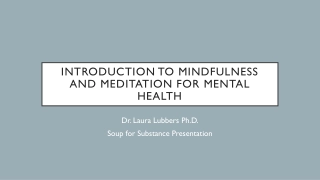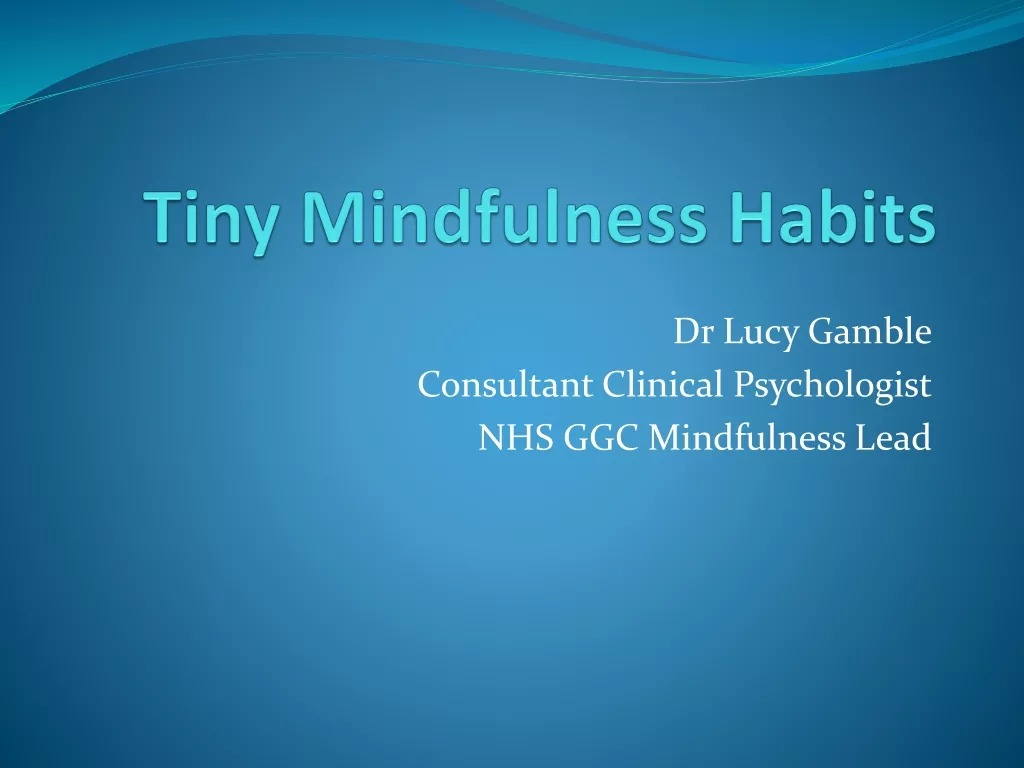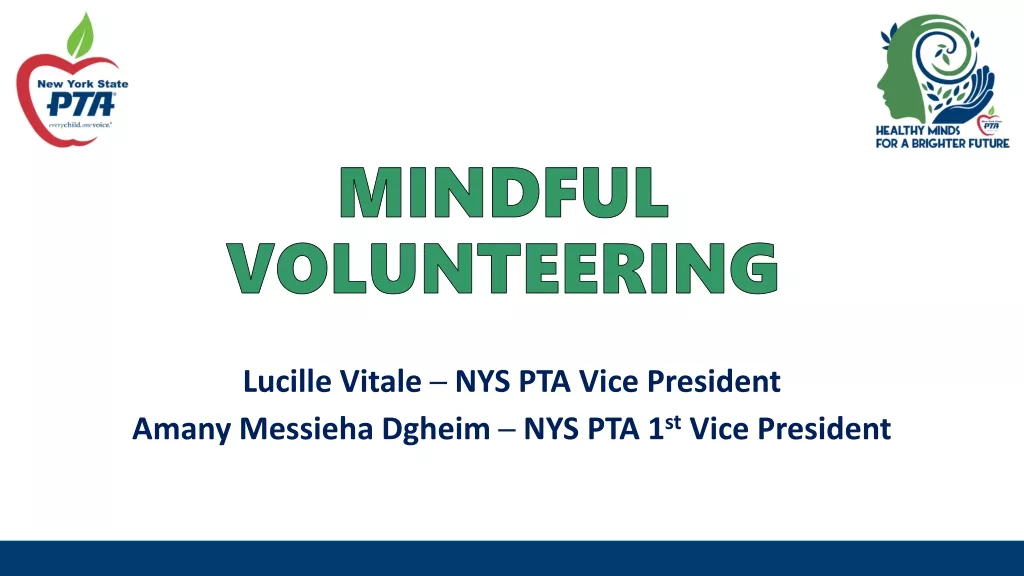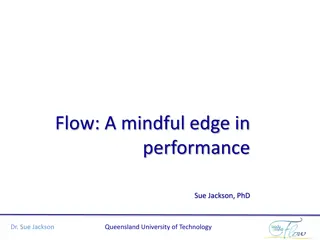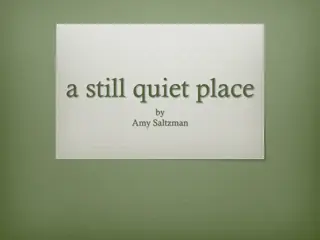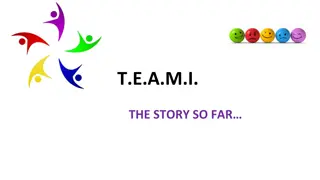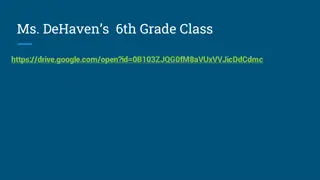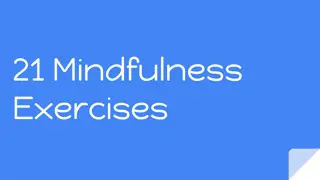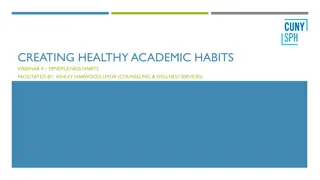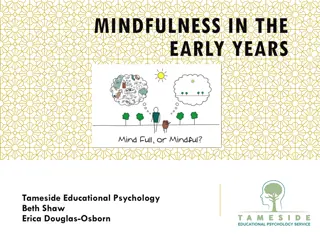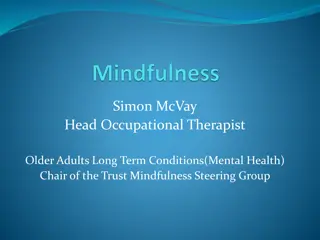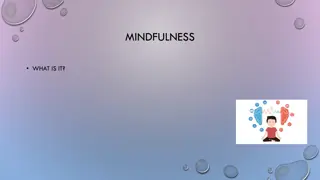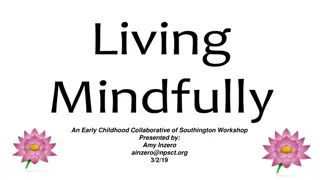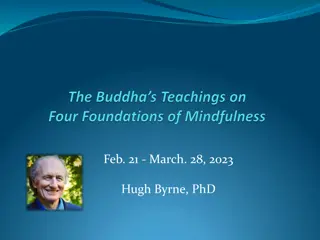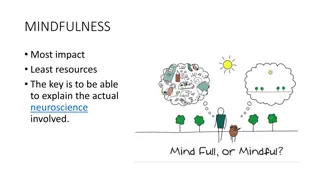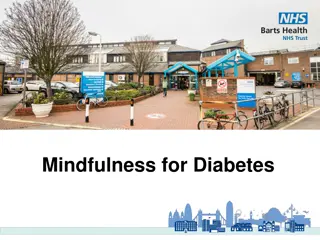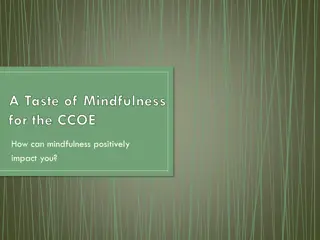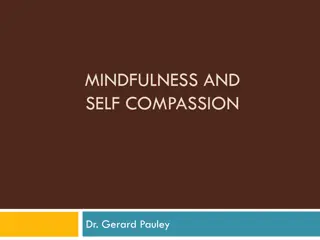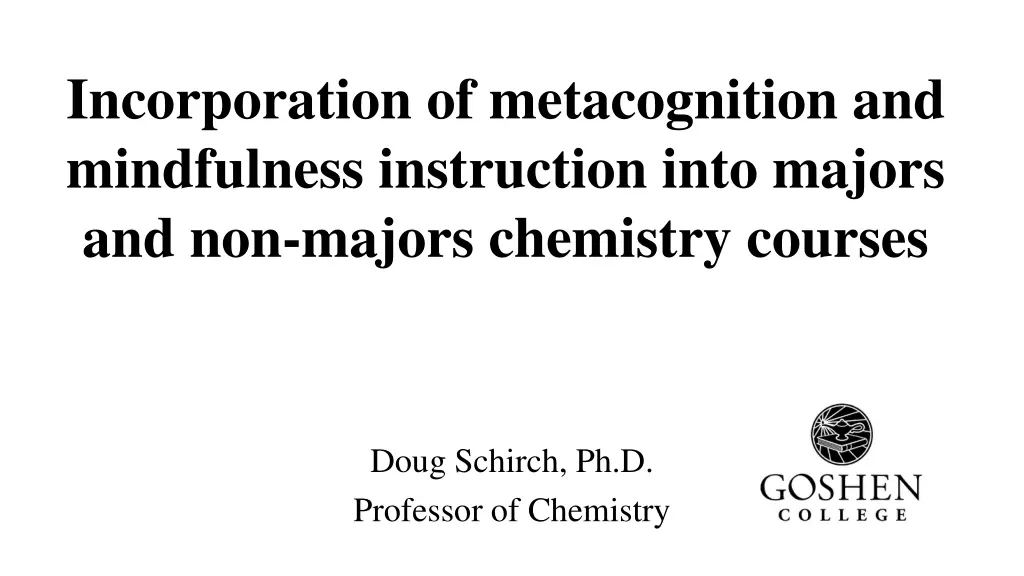
Enhancing Chemistry Education Through Metacognition and Mindfulness
Explore the integration of metacognition and mindfulness in chemistry courses to optimize learning and problem-solving skills. Understand the importance of reflecting on mental processes and utilizing appropriate strategies for academic success.
Download Presentation

Please find below an Image/Link to download the presentation.
The content on the website is provided AS IS for your information and personal use only. It may not be sold, licensed, or shared on other websites without obtaining consent from the author. If you encounter any issues during the download, it is possible that the publisher has removed the file from their server.
You are allowed to download the files provided on this website for personal or commercial use, subject to the condition that they are used lawfully. All files are the property of their respective owners.
The content on the website is provided AS IS for your information and personal use only. It may not be sold, licensed, or shared on other websites without obtaining consent from the author.
E N D
Presentation Transcript
Incorporation of metacognition and mindfulness instruction into majors and non-majors chemistry courses Doug Schirch, Ph.D. Professor of Chemistry
Please read this handout before the presentation:
The Problem with the Chainsaw A person goes to a hardware store looking for a saw to cut trees. The dealer sells them a chainsaw. You can cut many dozens of trees daily with this! The customer takes the chainsaw home, works several hours, only cuts up 2 trees, and decides, "I should work harder." The next morning the person starts at 5 a.m. and cuts and cuts till nightfall, but only manages to cut up 5 trees. The customer returns to the store to complain. Other customers say their saws are working beautifully, easily cutting dozens of trees daily. The dealer says the customer may need to sharpen the saw. The customer sharpens the chainsaw and then does a grueling 24-hour cutting marathon, but only gets 12 trees cut up. The customer takes the chainsaw back to the dealer and laments: My saw doesn t work as good as saws other people got. The dealer, baffled, removes the chainsaw from the case and pulls the cord to start it: BRMM-BRMM-BRMM-BRMM. The customer s eyes get huge. "What's that noise!!??
The chainsaw is a metaphor for your brain. Think that maybe your brain can t do chemistry problems? I think you re not using it right. I want you to learn how well your chainsaw can work. In this course I teach chemistry, and I teach metacognition.
What is Metacognition? Thinking about your thinking. Analyzing your learning For answering certain questions/problems, the ability to reflect on your mental processes and use appropriate strategies. Ability to know when answers are right or wrong. Or, Thinking about using your chainsaw http://www.ascd.org/publications/books/117002/ chapters/Introduction-to-Metacognition.aspx
Why teach metacognition? Would it help first-generation students? Chem 103 and 303, 2021-22 First- Top 80% of class 15 28 43 (79.6%) Bottom 20% of class 10 1 11 (20.4%) Totals generation? Yes No Totals: 25 29 54 X2(1, N = 54) = 11.1, p = 0.00088 Cramer s V = 0.45 (medium-large effect size)
Insights from Repeat Students who either got same grade in 2nd (and 3rd attempt) or do markedly better Key difference in 2nd attempts: I studied differently, like how you told us the first day.
Outline 1. Initial approach to teaching metacognition in my courses 2. Feedback/results 3. Revised approach including focus/mindfulness
Inspiration #1 1. Many students have poor metacognition. 2. They rely on study practices that give a false illusion of working. Cognitive psychologists.
Make It Stick: Experiment on memorization Vary: how much time students spend studying vs. testing. Group SSSS All students spend 7 minutes reading the same 250-word passage Group SSST Group STTT Study the passage Study the passage Study the passage Study the passage After 1 week all students take same test on how much they remembered. Study the passage Study the passage Study the passage Do a recall test Study the passage Do a recall test Do a recall test Do a recall test Psychol Sci. 2006 Mar;17(3):249-55. Students polled in assigned video: which group did better?
Make It Stick: Experiment on memorization Vary: how much time students spend studying vs. testing. Group SSSS All students spend 7 minutes reading the same 250-word passage Group SSST Group STTT Study the passage Study the passage Study the passage Study the passage After 1 week all students take same test on how much they remembered. Study the passage Study the passage Study the passage Do a recall test Study the passage Do a recall test Do a recall test Do a recall test Psychol Sci. 2006 Mar;17(3):249-55. The material looks increasingly familiar, creating an illusion of knowing . The tests highlight errors, not knowing.
Other examples from Make It Stick Massed vs. Spaced Practice
Medical School Experiment 19 Surgical residents All 38 students: same 4 short lessons in microsurgery: reattaching blood vessels. Instruction + practice. 1 week between each lesson. 1 month later: exam 19 Surgical residents All lessons in same day. Poll: Which group do you think performed better on the exam?
Medical School Experiment 19 Surgical residents All 38 students: same 4 short lessons in microsurgery: reattaching blood vessels. Instruction + practice. 1 week between each lesson. 1 month later: exam 19 Surgical residents All lessons in same day. Outperformed other group. Between lessons: normal forgetting Difficult later recall forms long-term memory
Comparison Practice Calculating Volumes of: Wedges, Spheroids, Spherical Cone, Half Cone https://link.springer.com/article/10.3758/s13421-019-00918-4
Comparison Practice Calculating Volumes of: Wedges, Spheroids, Spherical Cone, Half Cone Grouped Practice Interleaved Practice Same problems, but sequence was mixed Practice 4 problems with wedges, 4 problems with spheroids, etc. D. Rohrer & K. Taylor, The shuffling of mathematics problems improves learning, Instructional Science 35 (2007), 481-498
Comparison Practice Calculating Volumes of: Wedges, Spheroids, Spherical Cone, Half Cone Grouped Practice Interleaved Practice Same problems, but sequence was mixed Practice 4 problems with wedges, 4 problems with spheroids, etc. 89% correct Score During Practice Test 1 Week Later 60% correct
Comparison Practice Calculating Volumes of: Wedges, Spheroids, Spherical Cone, Half Cone Grouped Practice Interleaved Practice Same problems, but sequence was mixed Practice 4 problems with wedges, 4 problems with spheroids, etc. 89% correct Score During Practice Test 1 Week Later 60% correct Fooled 20% correct 63% correct My 1st-generation students miss these questions at about twice the rate of non-first generation students
Inspiration #2 Strategies you can incorporate into any course to improve student metacognition, study skills, and motivation. Developed 50-min. lecture Gave in G. Chem. classes Best: after 1st major exam. Demonstrated positive outcomes. [Keynote speaker, 2019 AAC&U STEM, Chicago] https://faculty.lsu.edu/smcgui1/
Modifications to course metacognitive instruction Acc. to Make It Stick principles: Spaced: Instead of one and done, all semester long Weekly short lessons as screencast videos (~ 6 min.) Assigned for weekends Interleaved Testing Start of each Monday class: 2-min. quiz on video content
Expected student reactions Yet more content in Org. Chem?! It s not even Org. Chem?! More quizzes in Org. Chem?! A students: won t benefit Others: only some recommendations needed My hope: at least half of students appreciate. If not, still continue if perceived to help at-risk students
Topics of metacognition videos Topics from Make It Stick Teach Students How to Learn How to solve recent class problems. Incl. intro to Bloom s Taxonomy of Learning 2 videos from [https://guides.fscj.edu/BOSS/TimeManagement ] [Presenters, 2019 AAC&U STEM, Chicago]
Pop Quiz! Get out a pencil/pen
Part 1 When I say, Start, you have 10 seconds to write as many sequential numbers as you can, starting with 1. 1 2 3 ..
Part 2 When I say, Start, you have 10 seconds to write as many sequential letters as you can, starting with A. A B C ..
Part 3 Turn the page to the other side. When I say, Start, you will have 20 seconds to write as many sequential number-letter combinations as you can. 1A 2B 3C .. [No going back]
Results You had the same amount of time as the previous 2 tests combined. How many got to the same number and letter as the previous tests? What your brain was doing? Multitasking. It is not wired to multitask. This was easier than organic chemistry and not new knowledge.
Effects of Multitasking Less efficient. Requires more energy; quicker exhaustion. More stressful. Less successful storage of new information in the hippocampus: the area of the brain where information is organized and categorized, necessary for later retrieval.
Class Organization Before class In class After class Homework practice Traditional Lecture
Class Organization Before class In class After class Homework practice Traditional Lecture Homework practice in small groups My courses (flipped) Lecture videos
Class Organization Before class In class After class Homework practice Traditional Lecture Homework practice in small groups My courses (flipped) Lecture videos Increasing numbers of students with little or no idea of what was in lecture videos.
Student responses to end-of-course surveys [IRB approved]
Repeat next year? I recommend the metacognitive activities be repeated in future years. 80% Chem 303-4 n=50 Chem 103 n=56 60% 40% 20% 0% Strongly disagree Disagree Neutral Agree Strongly agree
Did they see positive outcomes? The metacognition videos helped increase my course grade. My metacognition and learning skills improved during the course. 60% 40% Chem 303-4 n=50 30% 40% Chem 103 n=56 20% 20% 10% 0% 0% Strongly disagree Disagree Neutral Agree Strongly agree Strongly disagree Disagree Neutral Agree Strongly agree
Did they change study habits? Which ones? Comparing what I know to be good learning practices vs. what I did, I changed my study habits accordingly. Open-ended survey question: Compared to the start of the course, describe any ways that you now study differently. 80% Org 1 (n=40) 48 % (19) (G)OB (n=55) 36% (20) 60% Chem 103 n=56 Chem 303-4 n=50 Reduced multi-tasking and/or adopted Pomodoro technique Other changes 40% 20% 50 % (20) 53% (29) 0% Strongly disagree Neutral Strongly Agree No change mentioned 3% (1) 11% (6)
Finish course with growth mindset? I think it is possible with practice and effort to improve how well my brain learns. After a bad exam score, I always knew I could turn things around and do well in the course. 80% 60% Chem 103 n=56 60% 40% Chem 303-4 n=50 40% 20% 20% 0% 0% Strongly disagree Disagree Neutral Agree Strongly Strongly disagree Disagree Neutral Agree Strongly Agree Agree
Ah Ha moment Study: Frequency that undergrads on computers switch screens: Yeykelis L, Cummings JJ, Reeves B. 2014. J Commun. 64(1):167 192 Average = 65 sec. Median = 19 sec. Spring 2023: Surveyed students regarding their focus Made 2 new videos on topic
Survey of Chem 103 Students Strongly disagree Strongly agree This slide and some following shown to students in new videos
Social media Smart phones PC email www 10-30 min.?? (2004) 2:30 min. (2021) 0:45 min. (2012) 1:15 min. Unfathomable. When working on a computer, how long before people switch to another activity?
Research into how interruptions happen External interruptions External interruptions removed Uninterrupted focus Person asks question Text chime Email chime FB notification Text chime Negative thoughts Check phone Avoid something not enjoying Start Negative thoughts conversation Internal interruptions. Mind conditioned. I remember this!
The Gen Z brain has been rewired for a diminished ability to focus and concentrate. https://www.facultyfocus.com/articles/effective-teaching-strategies/the-mindful-learning- framework/?st=FFdaily%3Bsc%3DFF230206%3Butm_term%3DFF230206&mailingID=4444
Strategies for Increasing Focus Step 1: Practice meta-awareness: Be aware of your awareness Switching attention back and forth ? Multitasking? Locked in an addictive pattern?
Recommendation: Work like Maya Angelou I Know Why the Caged Bird Sings How she wrote. Hotel room 6:30 a.m. Removed wall paintings Brought cards and crossword puzzles. Said she alternated between using her big mind for deep thoughts, and small mind for crosswords and cards. https://awritersden.wordpress.com https://asialenae.com www.msnbc.com/msnbc/maya-angelou- radical-activist-msna338781
Recommendation: Work like Maya Angelou I Know Why the Caged Bird Sings How she wrote. Hotel room 6:30 a.m. Removed wall paintings Brought cards and crossword puzzles. Said she alternated between using her big mind for deep thoughts, and small mind for crosswords and cards. Place Time. Follow your natural rhythm of awareness Remove distractions www.msnbc.com/msnbc/maya-angelou- radical-activist-msna338781 Activities that replenish our attention tank: -Rote activities (not challenging) -Boredom
Digital Detox At certain times At certain places By changes on your phone Social media, email, etc.: rather than many short interruptions all day, do at set, limited times, but not during optimal focus times.
thenovicechefblog.com/easy-instant-pot-cheesecake buzzitt.com twitter.com/CDCgov
"Im unhappy and feel like Im struggling with depression." 30% 20% 10% 0% Strongly disagree Strongly agree

